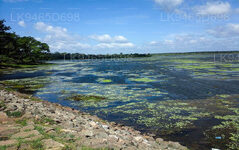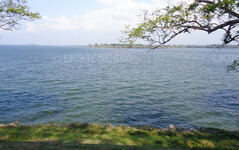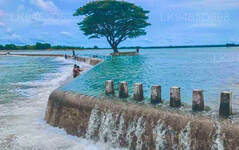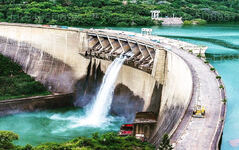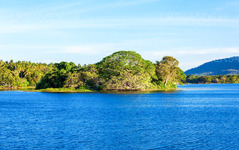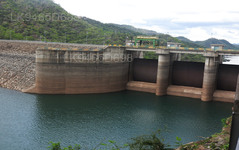Irrigation Tanks (Vewa)
Ancient Sri Lanka boasts a distinguished hydraulic civilization. The technology used to construct the irrigation system of Sri Lanka is unmatched.
The Vewa (irrigation tank) and the lives of ancient villagers were and still are intrinsically interconnected. If there wasn’t a Vewa to be seen in a particular area there was neither a paddy field nor a village in the vicinity. The Vewa, aside from fulfilling water and irrigation requirements of the Sri Lankan people, was also the quintessence of the grand and extensive cultural ethos of ancient villagers. The use of the irrigation tanks and the water and agricultural traditions associated with them has been passed down through generations and are still present today.
Structure
Tank Bund (Vew Bamma)
The Vew Bamma is made of soil that is pressed and pounded to ensure strength. In the past, animals such as oxen and goat were driven over heaps of soil several times to compact it. It holds water inside the tank.
Sluice Gates (Sorowwa)
Sluice gates are constructed to release water into paddy fields for irrigation. There are two parts to a sluice gate called the Mada Sorowwa and the Goda Sorowwa. The Mada Sorowwa is located at the bottom of the tank and expels the mud accumulated there. The Goda Sorowwa releases water into paddy fields. Sluice gates can be divided into two categories based on the technology used.
Pit/Tower (Bisokotuwa)
The technology used in the construction of valve pit/tower in large scale irrigation tanks is particularly applauded. The Bisokotuwa takes the shape of a well and is made of granite. It follows a sophisticated water regulating system called ‘Mohola’ which releases the right amount of water at the right time.
Surplus Weir (Pitavana)
Pitavana is constructed to protect the tank bund from damage during heavy rainfall by discharging excess water. The excess water travels through a small stream called ‘Van ela’. Water discharged from the surplus weir does not cause any harm to paddy fields.
Stone Liner (Ralapanava)
This is a granite stone liner constructed on the inside of the tank bund to prevent it from being eroded by the water current.
Vew Thavalla
Silt and debris are retained at the Vew Thavalla and prevents them from flowing into the water within the irrigation tank. Many trees, creepers and vines can be found in the Vew Thavalla which helps retain the silt and debris.
Diyakata Pahana
The Diyakata Pahana measured water level of the Vewa; if the level was too high, the sluice gates were opened releasing excess and if the level was too low releasing water into paddy fields was done more restrictively and meticulously.

